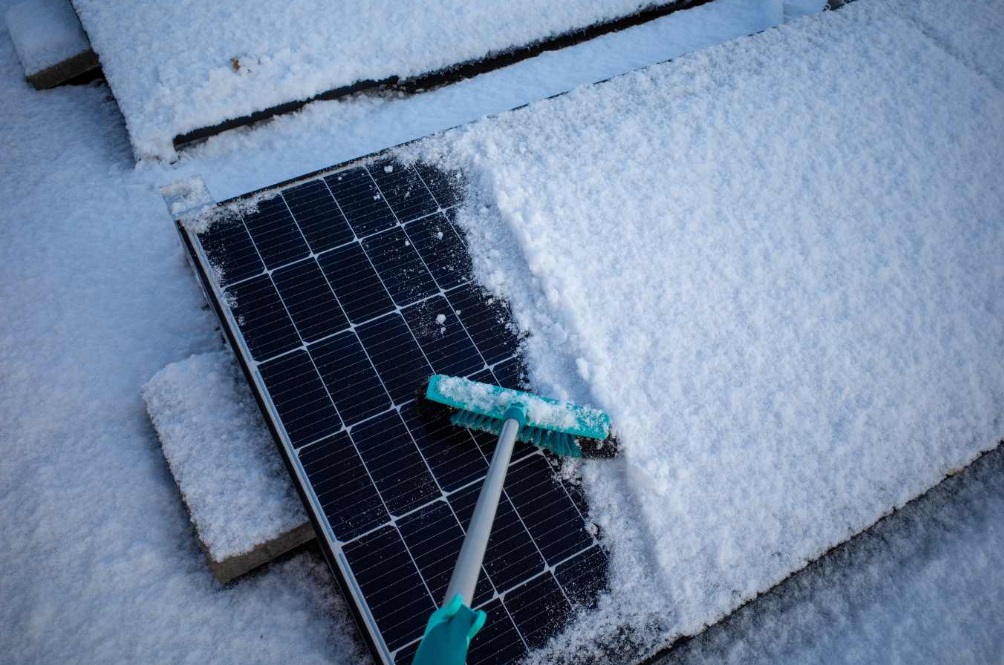What is a photovoltaic roof?
A photovoltaic roof, often referred to as a solar roof or solar photovoltaic (PV) roof, is a type of roofing system that incorporates solar panels or solar cells directly into the design of the roof. These solar panels are designed to capture sunlight and convert it into electricity using the photovoltaic effect.

Here’s how a photovoltaic roof works:
Solar Panels: Solar panels consist of multiple solar cells made from semiconductor materials, usually silicon. When sunlight hits these cells, it excites electrons within the material, generating a flow of electricity.
Roof Integration: In a photovoltaic roof, solar panels are integrated into the roofing material itself, whether that’s traditional roofing shingles, tiles, or another roofing type. This integration allows the solar panels to blend seamlessly with the rest of the roof, making them less visually obtrusive compared to traditional solar panels mounted on racks.
Electricity Generation: As sunlight hits the solar panels, the photovoltaic cells within the panels convert the solar energy into direct current (DC) electricity. This electricity can then be used to power your home’s electrical systems, appliances, and lighting.
Inverter and Grid Connection: The DC electricity generated by the solar panels needs to be converted into alternating current (AC) electricity, which is the type of electricity used in most homes and buildings. An inverter is used to perform this conversion. The AC electricity can be used within your home, and any excess electricity can be fed back into the grid if your system is connected to a grid-tied arrangement.
Energy Storage (Optional): Some photovoltaic roof systems also include battery storage systems, such as Tesla’s Powerwall, to store excess energy generated during the day for use during the night or during periods of low sunlight.
Photovoltaic roofs offer several advantages:
Aesthetics: They blend seamlessly with the overall design of the house, making them a more visually appealing option for homeowners concerned about the appearance of traditional solar panels.
Energy Generation: They allow you to generate your own electricity, potentially reducing your reliance on grid power and lowering your energy bills.
Sustainability: By generating clean and renewable energy, you contribute to reducing your carbon footprint and dependence on fossil fuels.
Increased Property Value: Solar installations, including photovoltaic roofs, can increase the resale value of your property.
It’s worth noting that photovoltaic roofs typically come with a higher upfront cost compared to traditional roofing materials. However, over the long term, the energy savings and potential incentives or rebates for solar installations can help offset the initial investment. When considering a photovoltaic roof, it’s essential to consult with experts, get multiple quotes, and weigh the costs and benefits for your specific situation.
What is the purpose of photovoltaics?
The primary purpose of photovoltaics (PV) is to convert sunlight directly into electricity using solar cells. Photovoltaic technology harnesses the energy from the sun to generate clean and renewable electricity. This electricity can be used for various applications, ranging from powering individual devices to supplying electricity for homes, businesses, and even entire power grids. Here are some key purposes and benefits of photovoltaics:
Renewable Energy Generation: Photovoltaics provide a sustainable and environmentally friendly way to generate electricity. Unlike fossil fuels, which produce greenhouse gas emissions and contribute to climate change, solar energy is clean and does not produce harmful emissions during operation.
Reduced Carbon Footprint: By using photovoltaics to generate electricity, we can reduce our reliance on fossil fuels and decrease our carbon footprint. This contributes to mitigating the effects of climate change.
Energy Independence: Photovoltaic systems allow individuals, businesses, and communities to generate their own electricity, reducing dependence on external energy sources and volatile energy prices.
Distributed Energy Generation: PV systems can be installed on rooftops, open land, and even integrated into infrastructure like solar roadways and noise barriers. This distributed generation approach can help stabilize the grid by reducing strain on centralized power plants and transmission lines.
Grid Integration: Photovoltaic systems can be integrated into existing power grids, providing additional sources of electricity during peak demand periods. Excess energy generated by PV systems can also be fed back into the grid, contributing to the overall energy supply.
Remote Power Generation: Photovoltaics are especially useful in remote areas where connecting to a traditional power grid may be challenging or expensive. Solar power can provide essential electricity for lighting, water pumping, and communication systems in such locations.
Emergency Power: Photovoltaic systems with battery storage can provide a source of electricity during power outages or emergencies, improving resilience and disaster response.
Job Creation and Economic Growth: The growth of the photovoltaic industry creates jobs in manufacturing, installation, maintenance, and research. It also stimulates economic growth by promoting investment in clean energy technologies.
Technological Innovation: Continued research and development in photovoltaic technology lead to improvements in efficiency, cost reduction, and the development of new applications.
Environmental Benefits: Using solar energy reduces air and water pollution associated with traditional energy sources. It also helps conserve water resources, as photovoltaics do not require water for operation.
Overall, the purpose of photovoltaics is to provide a sustainable and viable solution for generating electricity from sunlight, addressing energy challenges, reducing environmental impacts, and promoting a more sustainable energy future.
Leave a comment